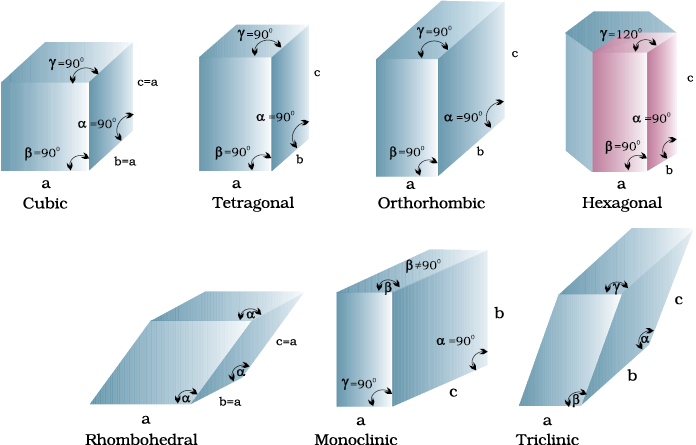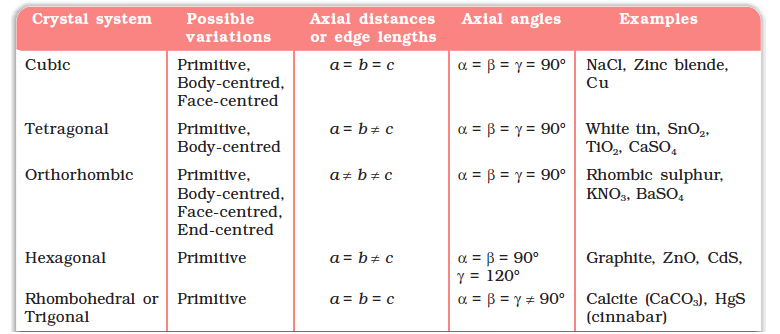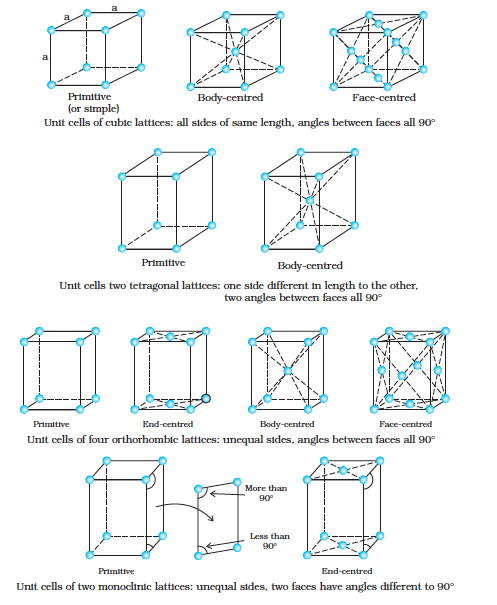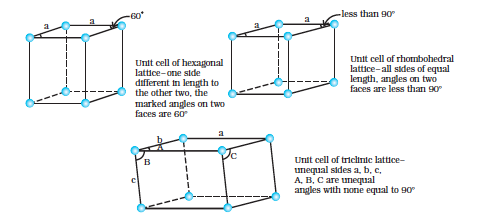Unit cells can be broadly divided into two categories, primitive and centred unit cells.
(a) Primitive Unit Cells
When constituent particles are present only on the corner positions of a unit cell, it is called as primitive unit cell.
(b) Centred Unit Cells
When a unit cell contains one or more constituent particles present at positions other than corners in addition to those at corners, it is called a centred unit cell. Centred unit cells are of three types:
(i) Body-Centred Unit Cells: Such a unit cell contains one constituent particle (atom, molecule or ion) at its body-centre besides the ones that are at its corners.
(ii) Face-Centred Unit Cells: Such a unit cell contains one constituent particle present at the centre of each face, besides the ones that are at its corners.
(iii) End-Centred Unit Cells: In such a unit cell, one constituent particle is present at the centre of any two opposite faces besides the ones present at its corners.

Table 1.3: Seven Primitive Unit Cells and their Possible Variations as Centred Unit Cells


Unit Cells of 14 Types of Bravais Lattices



© 2025 GoodEd Technologies Pvt. Ltd.